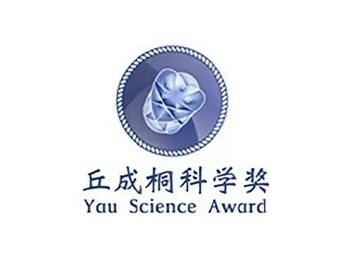22 Physics Research Topics for High School Students
Physics is the study of matter, energy, and their interactions, covering a wide range of topics from microscopic particles to the vast universe. It reveals the fundamental laws and phenomena of nature, helping us understand the world around us. For high school students, physics is not only a subject but also a tool to develop logical thinking, problem-solving skills, and creativity. Through physics research, students can gain a deeper understanding of how physical laws shape our world and lay a solid foundation for future academic and career success.
How to start physics research for high school students?
First, you can choose a subfield of physics that interests you, such as mechanics, electromagnetism, or optics. Each field has a wealth of research topics and experimental methods waiting for you to explore and innovate. To start research in physics, you need to grasp basic physical principles and experimental skills, develop a research plan, and learn how to present and share findings. Additionally, joining science clubs, participating in lab courses, or seeking mentorship are great ways to get started. Through these steps, you can gradually dive into physics research and enjoy the excitement of exploring the unknown.
In this section, Embark physics mentors provide 22 physics research topics covering various areas of physics, aiming to spark your interest in research and provide inspiration for exploration. We hope these ideas will help you begin your journey into physics research!
Research Topic 1: Fundamental Mechanics Principles in Physics
The fundamental principles of mechanics in physics cover topics such as Newton's laws of motion, collision mechanics, gravity and orbital mechanics, and simple harmonic motion. These principles help us understand how objects move under different forces. For example, Newton’s three laws describe how objects accelerate, decelerate, or remain stationary when acted upon by forces. Collision mechanics explores how different types of collisions affect the motion of objects, which is crucial for understanding car crashes or the dynamics of sports. Gravity and orbital mechanics studies how gravity shapes the motion paths of celestial bodies, with profound implications for space engineering and astronomy. Additionally, the study of simple harmonic motion reveals the movement characteristics of spring oscillators and pendulums, knowledge that has broad applications in engineering design. Through these studies, high school students not only learn core physics concepts but also improve experimental design and data analysis skills.
You can explore the following topics:
- Applications of Newton's laws: Study how Newton's three laws apply in different situations.
- Collision mechanics: Analyze how different types of collisions affect the motion of objects.
- Gravity and orbital mechanics: Investigate how gravity influences the movement of celestial bodies and satellites.
- Simple harmonic motion: Study the motion characteristics of spring oscillators and pendulums.
Research Topic 2: Electromagnetism and Modern Electronics Technology
Electromagnetism is the science that explores charges, currents, and the electric and magnetic fields they generate. It forms the foundation for understanding how circuits and electronic devices work and is at the heart of modern electronics technology. Through circuit design and analysis, students can learn how to build and analyze various types of circuits, mastering fundamental concepts such as current, voltage, and resistance. In addition, the study of electromagnetic waves reveals the applications of radio waves, microwaves, and others in fields like communication and medicine. The principles and design of electric motors demonstrate how electrical energy is converted into mechanical energy, while the working principle of transformers explains how voltage and current are transformed. These studies not only deepen students' understanding of electromagnetism but also cultivate their innovative thinking and hands-on skills.
You can explore the following topics:
5. Circuit design and analysis: Build and analyze different types of circuits to understand how they work.
6. Applications of electromagnetic waves: Explore the use of radio waves, microwaves, and other electromagnetic waves in communication and medicine.
7. Principles and design of electric motors: Study how electric motors convert electrical energy into mechanical energy.
8. Working principle of transformers: Analyze how transformers change voltage and current.
Research Topic 3: Optics and Vision Science
Optics is the science that studies the properties and behavior of light, and it is crucial for understanding vision and designing optical devices. In optics research, students can explore phenomena such as refraction and reflection, learning how light changes its path through different media, which is important for designing optical components like lenses and mirrors. Additionally, the design and application of lenses involve correcting vision or magnifying images, which are core principles in the design of glasses and microscopes. The study of interference and diffraction reveals the wave nature of light, which is essential for understanding the propagation of light and the performance of optical instruments. Color science explores the color of light and its applications in both art and technology, such as in display technology and color management. Through these studies, high school students can improve their understanding of the physical properties of light and develop their skills in experimentation and design.
You can explore the following topics:
9. Refraction and reflection of light: Study how light behaves in different media.
10. Design and application of lenses: Explore how lenses are used to correct vision and magnify images.
11. Interference and diffraction of light: Analyze the wave nature of light and its application in experiments.
12. Color science: Study the color of light and its expression in art and technology.
Research Topic 4: Thermodynamics and Energy Conversion
Thermodynamics focuses on energy conversion and transfer, which is essential for understanding engines, refrigeration systems, and many other engineering applications. In this field, students can experimentally validate the first and second laws of thermodynamics, gaining a deeper understanding of concepts such as energy conservation and entropy. The study of heat conduction and convection reveals how heat is transferred through materials, which is vital for designing efficient heat exchangers and insulating materials. Heat engine efficiency analysis involves examining how different types of heat engines convert thermal energy into mechanical energy, which has practical significance in improving energy efficiency. Furthermore, research on renewable energy technologies explores the principles and applications of sources like solar energy and wind energy, which play an important role in sustainability and environmental protection. Through these studies, high school students can learn the basic principles of energy conversion and develop the ability to solve practical problems.
You can explore the following topics:
13. Experimental validation of thermodynamic laws: Experimentally validate the first and second laws of thermodynamics.
14. Heat conduction and convection: Study how heat is transferred through materials.
15. Efficiency of heat engines: Analyze the efficiency of different heat engines and their energy conversion.
16. Renewable energy technologies: Explore the principles and applications of solar and wind energy.
Research Topic 5: Atomic Physics and Nuclear Technology
Atomic physics studies the microscopic structure of matter, particularly the behavior of atoms and subatomic particles. In this field, students can explore the mysteries of atomic structure, learning about the roles of electrons, protons, and neutrons, and how they interact according to the principles of quantum mechanics. The principles of radioactive decay reveal how radioactive materials transform, with applications in medicine and industry, such as in cancer treatment and the production of radioisotopes. The working principles of nuclear reactors involve the basic principles of nuclear fission and fusion and their applications in energy production, which are critical for understanding the safety and efficiency of nuclear energy. Research into the applications of particle accelerators shows their importance in scientific research and technological development, such as in high-energy physics experiments and materials science. Through these studies, high school students can gain a deeper understanding of the microscopic world of matter and enhance their awareness of modern technological developments.
You can explore the following topics:
17. Exploring atomic structure: Study the roles of electrons, protons, and neutrons in the atom.
18. Principles of radioactive decay: Analyze how radioactive materials transform and their applications in medicine and industry.
19. Working principles of nuclear reactors: Explore the basics of nuclear fission and fusion and their applications in energy production.
20. Applications of particle accelerators: Study the role of particle accelerators in scientific research and technological development.
Research Topic 6: Astrophysics and Space Exploration
Astrophysics studies celestial bodies and phenomena in the universe, helping us understand the origin and evolution of the cosmos. In this field, students can explore the lifecycle of stars, from their formation and development to their eventual death, understanding how this process contributes to the chemical evolution of the universe. Research on black holes and gravitational waves involves studying the most mysterious celestial objects—black holes—and their influence on surrounding space-time. The detection of gravitational waves provides a new way to observe the universe, revealing physical phenomena under extreme conditions of celestial motion. Through these studies, high school students can expand their understanding of the universe and ignite their interest and imagination for space exploration.
You can explore the following topics:
21. Lifecycle of stars: Explore the process from star formation to death.
22. Black holes and gravitational waves: Study the properties of black holes and the detection of gravitational waves and their impact on physics.
You can view more Physics research topics for high school students here.
Another Option - Embark Exploration Program
Embark, established in 2016, is an educational institution focused on providing customized scientific research training for young people. The core team members are graduates from top universities in the United States. Embark has over 3,000 mentors from prestigious institutions such as the Ivy League, MIT, Caltech, Johns Hopkins University, and Carnegie Mellon University.
Embark offers personalized one-on-one research guidance, tailoring research topics to the interests of each student. Embark helps students systematically develop research skills, build a solid research framework, integrate research with real-world applications, understand the value of research, and enhance their problem-solving abilities. All of this contributes to strengthening their college applications.
For more information, please visit the Embark Exploration Program. If you have any questions or need further information, feel free to contact us. We would be happy to assist you and discuss collaboration opportunities.






